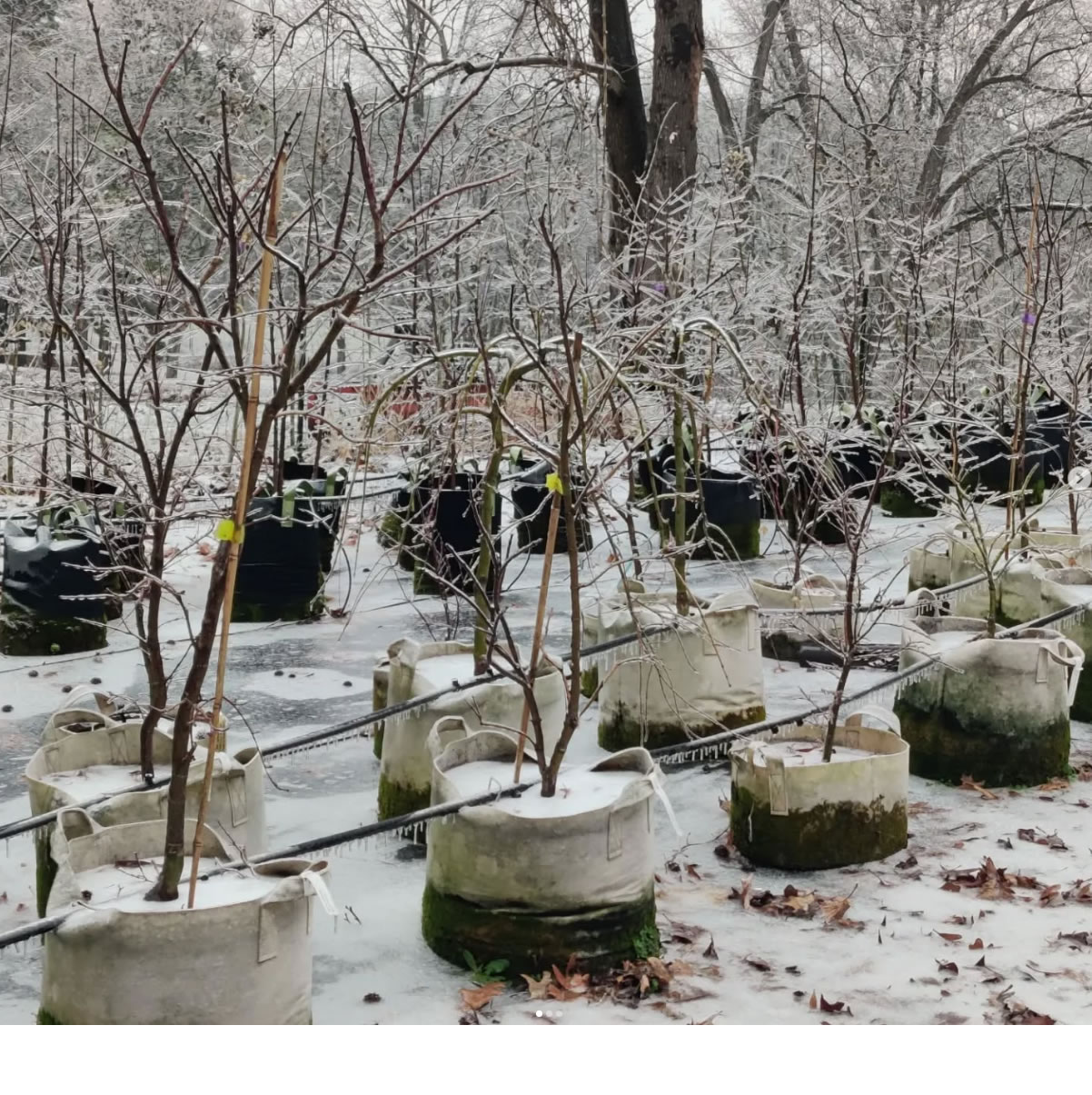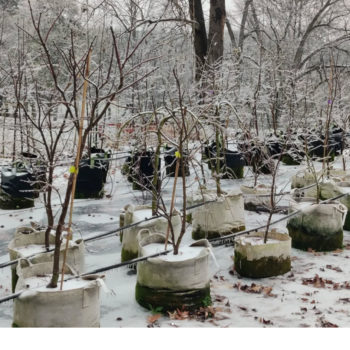Date: November 19, 2024

Photo Courtesy of Spirit Maple Nursery (@spirit_hill_maple_nursery)
As the chill of winter sets in, gardeners with fabric pots need to take special care to ensure their plants and containers survive the colder weather. Fabric pots offer excellent benefits in warmer months, such as improved drainage, better root health, and enhanced air pruning, but they require a bit of extra attention when the temperatures drop. Here’s how to winterize your fabric pots to protect your plants and prolong the life of the pots.
Why Winterizing Fabric Pots is Important
Unlike traditional plastic or ceramic pots, fabric pots are breathable and allow for air circulation to the roots. However, this porous nature can be a disadvantage during winter. The fabric doesn't retain heat like solid containers, and the exposed roots are more susceptible to freezing. Additionally, the fabric itself can degrade if exposed to harsh winter weather. Taking steps to protect both the plants and the pots can help ensure a healthy garden in the spring.
Steps to Winterize Your Fabric Pots
1. Move Pots to a Sheltered Location
One of the easiest ways to protect your fabric pots during winter is to move them to a more sheltered area. If you’re growing plants in containers outdoors, consider relocating them to a porch, garage, or shed where they are shielded from the worst of the cold and wind. If your garden is in a particularly cold region, bringing the pots indoors or into a greenhouse may be necessary for survival.
If moving the pots is not an option, consider grouping them together. Arranging them close together helps create a microenvironment that can help insulate the plants from the cold.
2. Insulate the Pots
For pots left outdoors, insulation is key. You can use materials like burlap, old blankets, or even bubble wrap to wrap around your fabric pots. Make sure to wrap the pots thoroughly, covering all sides to create a barrier against freezing temperatures. If you’re in a particularly cold climate, you might also want to add a layer of straw or leaves around the base of the plants for extra protection.
For added protection, you can use pot covers made specifically for winter. These are available in a variety of materials and can help keep your plants safe from frost and freeze damage.
3. Use Mulch or Compost
Adding a layer of mulch or compost to the top of your soil can help insulate the roots against extreme cold. Mulch acts as a protective blanket, helping to maintain more stable soil temperatures. Straw, shredded leaves, wood chips, or even grass clippings are great choices for mulch. Apply a thick layer (3-4 inches) to keep the roots warm, especially for perennial plants that need extra protection.
4. Water Carefully
In winter, it’s important not to overwater your plants, as fabric pots drain quickly. Too much moisture can freeze and damage the roots. Water your plants sparingly, only when the top inch of the soil feels dry. If you're expecting a hard freeze, consider watering your plants just before the freeze hits, as moisture can help buffer the effects of cold.
Be cautious about watering in the late afternoon or evening, as it can freeze overnight. Watering in the morning allows plants to absorb moisture during the day and avoid freezing in the night.
5. Prune Dead Foliage
Before winter really sets in, take the time to prune any dead or diseased foliage from your plants. Removing excess growth not only reduces the plant’s energy expenditure during the cold months but also prevents moisture from collecting on dying leaves, which could lead to fungal diseases. If you’re overwintering perennial herbs or vegetables, make sure to cut back any excess growth that may be vulnerable to frost.
6. Check Your Fabric Pots for Wear and Tear
Before the winter weather arrives, inspect your fabric pots for any damage or signs of wear. Check for holes, thinning, or fraying edges. Fabric pots that have been exposed to sunlight for an extended period may be more prone to deterioration, so repairing any holes or replacing worn-out pots before winter can help extend their lifespan. If the fabric pots are looking too worn, now is the time to invest in new ones before the new growing season.
7. Consider Bringing Some Plants Indoors
If you have any frost-sensitive plants, consider bringing them indoors for the winter. Many fabric pots are lightweight and easy to move, making it possible to relocate plants to a sunny windowsill or a greenhouse. This can be a great solution for smaller plants like herbs or tropical varieties that can’t handle frost.
For larger plants that may be too heavy or difficult to move, you can place them in a cold frame or plant them in a location where they’ll be protected from the worst of the winter elements.
Final Thoughts
Winterizing your fabric pots is all about minimizing exposure to freezing temperatures and protecting the roots of your plants. By moving pots to sheltered spots, insulating them, adding mulch, and pruning carefully, you’ll give your plants the best chance to survive the winter. Fabric pots are an excellent option for many types of plants, and with proper care, they’ll continue to serve you well for years to come.
With these steps, you can rest easy knowing your plants and pots are winter-ready and prepared for a fresh start come spring!
Happy Gardening! 🌿❄️
If you found this post helpful, share it with your fellow gardeners, and let us know in the comments how you winterize your garden!








